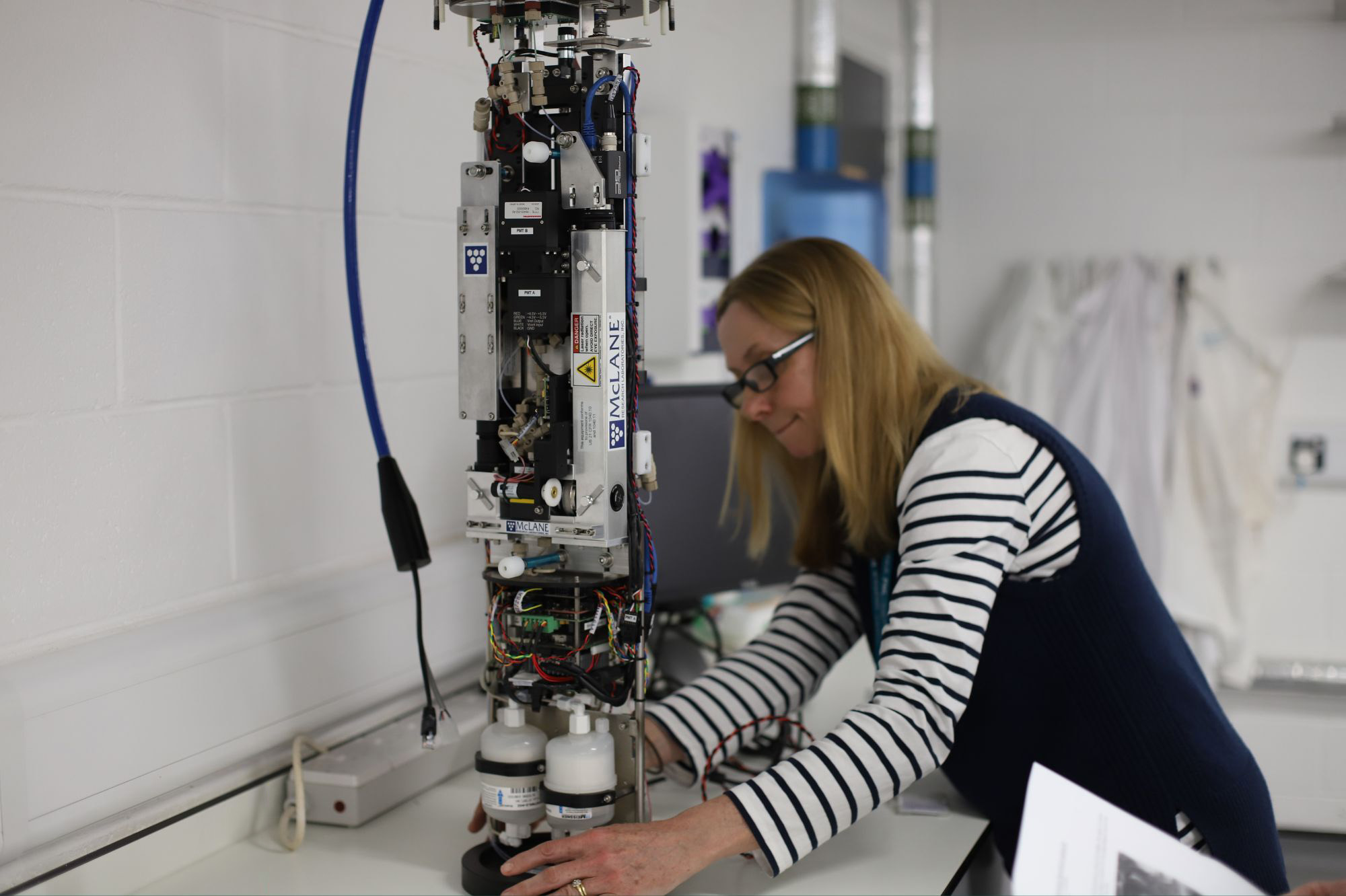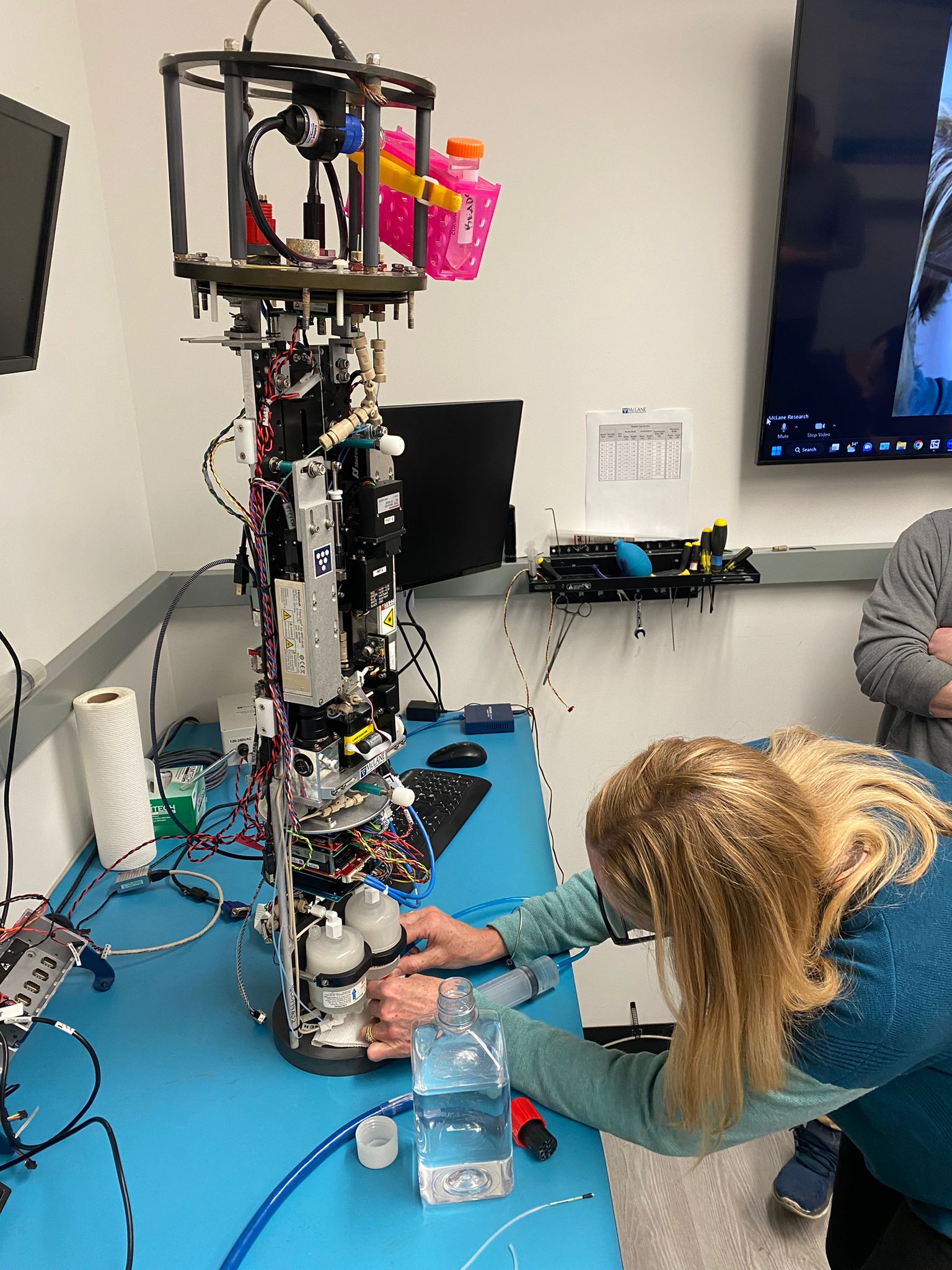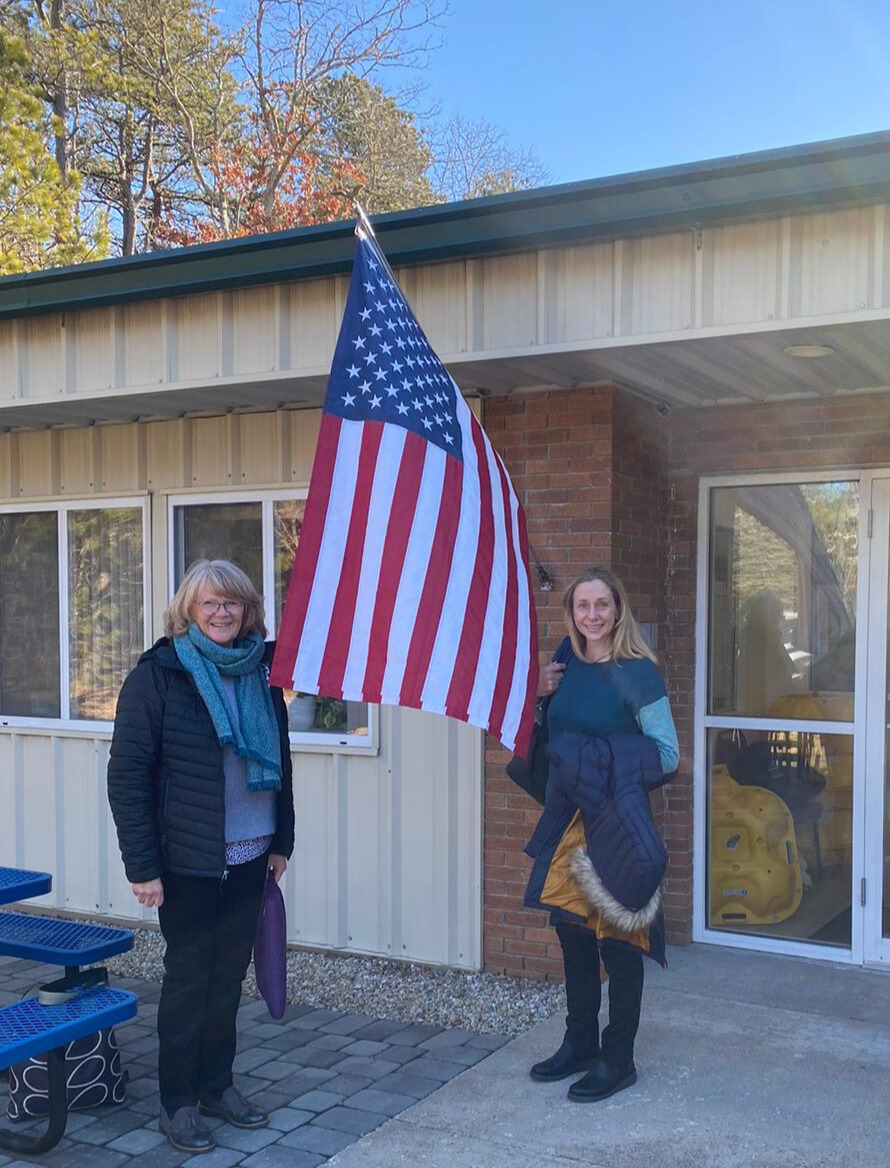Story
Staff spotlight: Claire Widdicombe – Plankton Ecologist
12 June 2023

Claire Widdicombe is a Plankton Ecologist with 30 years research experience, and over 70 publications relating to plankton biodiversity, community structure, and ecosystem function.
These microscopic organisms may be small, but their role cannot be understated when it comes to the health of our ocean. Plankton form the base of the marine food web; supporting the majority of marine ecosystems and the human communities that depend on these ecosystems.
Not only that, but autotrophic components of the plankton community, like phytoplankton (plant-like organisms), contain chlorophyll to capture sunlight, and they use photosynthesis to turn it into chemical energy. They consume carbon dioxide, and release oxygen – and play a huge role in the marine carbon cycle.
Plankton both affect our climate and are affected by it. Understanding the dynamics of planktonic communities, and the challenges they face is critical to maintaining the health and well-being of life on our planet.
Claire is one of our ‘go-to’ scientists for all things plankton. She’s also the Phytoplankton Lead in the Western Channel Observatory, and we thought she would be perfect to chat to about how we collect that data for the WCO and what we do with it. She kindly took some time from her busy schedule to sit down with us and tell us more. We first asked her to describe her role and what it involves.
“I’m a plankton ecologist with a specific expertise in phytoplankton taxonomy. As such, I generate and publish plankton datasets, publish peer-reviewed papers and participate in field work.”
“My current research combines traditional and pioneering technology, such as microscopy, automated image recognition and eDNA, to explore long-term trends in the diversity of phytoplankton communities, including harmful algal species (HABs), so as to quantify the potential impacts of climate change (weather extremes, rising temperatures and nutrient supply) on microbial communities.”
It was back in 2005 that Claire took over the responsibility for maintaining the long-term phytoplankton Station L4 time-series dataset as part of the WCO – which has been running for 30 years now! We asked her to describe her role as lead, and what the process involves.
“Samples are collected weekly (weather permitting!) from PML’s Plymouth Quest, and I analyse these at PML using traditional microscopy techniques like the Utermöhl settlement method.”

Above: Claire on our research vessel, Plymouth Quest, taking samples.
“Individual cells are identified, where possible, to species level and their numbers are converted to cell abundance and carbon biomass. These data provide information on the concentration and composition of the <200µm fraction and the full dataset is published at the British Oceanographic Data Centre.”

Above: Claire with colleagues on the Plymouth Quest.
We then asked Claire what happens to the data, and why it benefits marine science.
“This taxonomically-resolved dataset has been used in numerous peer-reviewed papers, reports, PhD projects and media campaigns. It underpins numerous applications including validating satellite data, improving models and making predictions as to when and where certain species will bloom. This helps to inform policy makers how our marine ecosystems are being affected by climate change and how to better protect them now and in the future.”
We next asked her whether she has a favourite species of phytoplankton, or perhaps a favourite time of year to observe the annual changes of phytoplankton through sampling.
“It always amazes me how intricate and beautiful phytoplankton are. Mostly invisible to the naked eye they are made up of many different shapes, colours and sizes. Some are motile while some are not. Some live a solitary life while others form long chains or colonies.”
.png)
Above: Diatoms and copepods taken from a sample at Station L4 - early signs the plankton are getting ready for the spring bloom. Credit Claire Widdicombe.
“Spring months are particularly interesting as the phytoplankton community takes advantage of longer days, warmer temperatures and a plentiful supply of nutrients to grow quickly and bloom, supporting a succession of highly diverse species, especially diatoms. But I also enjoy seeing some of the rarer coccolithophores that occasionally pop up in the samples. Their calcareous plates are beautiful and ornate.”
/gqerg.jpg)
Above: L4 Coccolithophore Coccolithus pelagicus. Credit Claire Widdicombe.
Some fluctuations of plankton can be anticipated (like during the spring bloom that Claire mentioned), but we wondered whether Claire had seen anything unusual over the years, or whether she had any unexpected samples come in. We asked her.
“Yes! Last September I spotted a diatom I’d not seen before and a few dinoflagellates that I knew were more commonly associated with warmer waters. Perhaps the influence of the jet-stream reached our coastal waters for a brief couple of weeks. And a few years ago, I found a diatom that resembled the shape of a well-known crisp. It had also been spotted along the French coast and the German Bight of the North Sea and we published these findings after identifying it as a new species, Plagiolemma distortum.”
/jhvjhcg.jpg)
Above: Plagiolemma distortum, a new species discovered by Claire and the team. Credit Claire Widdicombe.
Claire is also the lead for our new Imaging Flow Cytobot, a very exciting piece of technology that will form part of our Automated, in situ Plankton Imaging and Classification System project (APICS).
The Imaging Flow Cytobot is submersible and will be deployed at our L4 coastal station (6 nautical miles south of Plymouth) in the Western Channel Observatory, and will offer advanced monitoring of plankton in-situ - automatically generating high-resolution images directly from the site. Claire describes the technology.
“The new Imaging Flowcytobot is a game-changer in the quantity and quality of data we can generate, especially on such short hourly timescales. This will enable us to understand the succession and blooms of individual species, their different stages in development, causes or triggers of parasitic infections, as well as monitor the effect of extreme events e.g., storms or heatwaves on the phytoplankton community.”
 Above: Claire using an Imaging FlowCytobot
Above: Claire using an Imaging FlowCytobot
"As it will be extracting data continuously, it will also collect a higher range and frequency of data than we could ever possibly collect ourselves manually. It also offers a radically more sustainable solution to sampling. Traditional sampling involves using a research vessel and crew, which can be expensive and logistically challenging, and of course, leaves an environmental footprint. APICS offers a clear solution through autonomous data collection.”
/Untitled-design-(6).png) Above: A collation of photos autonomously taken using the new Imaging FlowCytobot.
Above: A collation of photos autonomously taken using the new Imaging FlowCytobot.

Above: Elaine Fileman and Claire in Massachusetts (USA) for bespoke training from McLane Labs with their Imaging FlowCytobot.
It’s clear that recent advancements in technology are streamlining marine science. We next asked Claire how she envisaged the future of sampling or data collection in the WCO.
“I believe we will always need the traditional sampling with human expertise for validation purposes, but new technology and AI capabilities mean we will be able to generate more data more quickly and make new discoveries all whilst reducing our carbon footprint, which is exciting!”
To conclude our interview, our next few questions were based around getting to know Claire, the person behind the plankton! We asked her about any highlights over her career, or whether there were any special moments she would like to share.
“I’ve been fortunate to have worked at PML for a long time so there are many highlights and special moments e.g., publishing my first paper, visiting amazing places (Iceland, South Georgia, Arabian Sea, Cape Cod....), seeing pods of dolphins and pilot whales in the wild, witnessing bioluminescence for the first time (and seeing some of the species responsible for this spectacular light show under the microscope)…..and of course getting our first IFCB!”
And lastly, we asked Claire what she enjoys most about living and working in Plymouth, and what she does to unwind after a busy day in the office.
“Our office is situated in such a beautiful location, we’re lucky to be able to access the waterfront and enjoy sea views from the laboratory.”
“Plus, I live on the edge of Dartmoor, so we also have beautiful views at home! And I love to get out into the fresh air and soak up the views, either walking the dog or out on my horse.”
Thank you Claire for taking the time to speak to us.